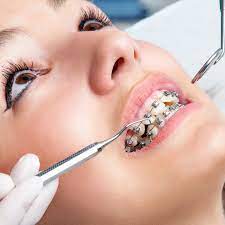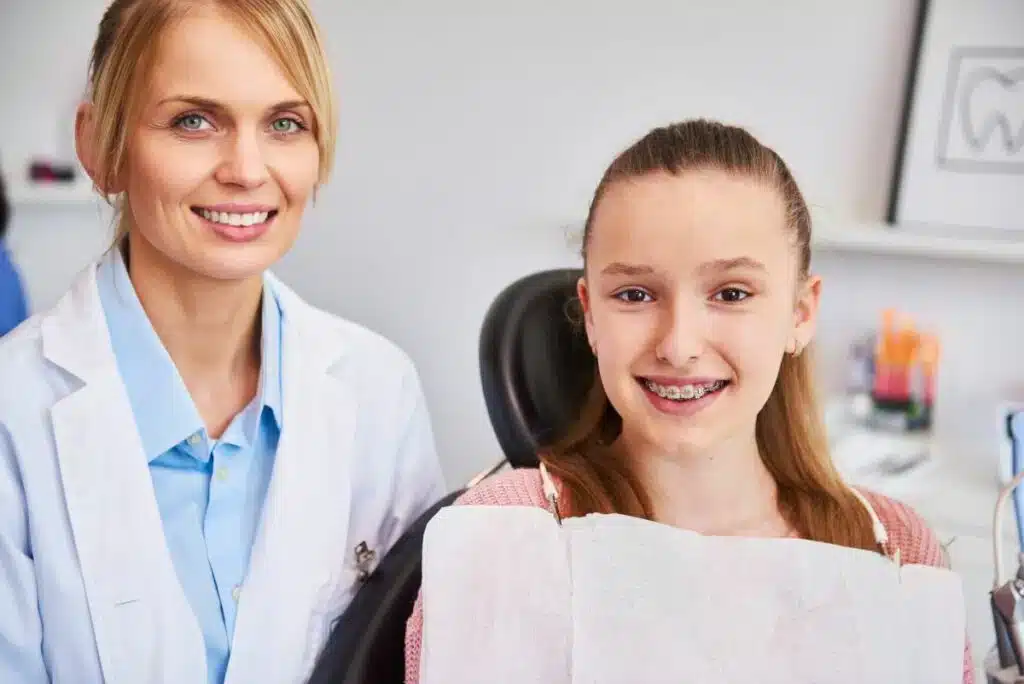Some Known Factual Statements About Causey Orthodontics
Table of ContentsLittle Known Questions About Causey Orthodontics.Getting My Causey Orthodontics To WorkUnknown Facts About Causey OrthodonticsCausey Orthodontics Things To Know Before You BuyWhat Does Causey Orthodontics Mean?
Neglecting occlusal connections, it was common to remove teeth for a range of oral issues, such as malalignment or congestion. The idea of an intact teeth was not widely valued in those days, making bite correlations appear unnecessary. In the late 1800s, the principle of occlusion was necessary for creating dependable prosthetic substitute teeth.As these ideas of prosthetic occlusion progressed, it ended up being a vital tool for dentistry. It was in 1890 that the work and influence of Dr. Edwards H. Angle began to be really felt, with his contribution to modern-day orthodontics particularly significant. Concentrated on prosthodontics, he taught in Pennsylvania and Minnesota before routing his attention in the direction of dental occlusion and the treatments needed to keep it as a typical problem, thus ending up being recognized as the "father of modern orthodontics".

The principle of excellent occlusion, as postulated by Angle and integrated into a category system, made it possible for a shift in the direction of dealing with malocclusion, which is any discrepancy from regular occlusion. Having a complete collection of teeth on both arcs was extremely sought after in orthodontic therapy due to the need for specific connections between them.
Rumored Buzz on Causey Orthodontics
As occlusion ended up being the essential top priority, face percentages and aesthetics were ignored - Causey Orthodontics. To attain suitable occlusals without using outside pressures, Angle postulated that having excellent occlusion was the most effective means to gain maximum facial looks. With the passing away of time, it became rather noticeable that even a remarkable occlusion was not appropriate when thought about from a visual perspective
Charles Tweed in America and Raymond Begg in Australia (that both examined under Angle) re-introduced dental care extraction right into orthodontics throughout the 1940s and 1950s so they can boost face esthetics while additionally ensuring better security worrying occlusal partnerships. In the postwar duration, cephalometric radiography begun to be made use of by orthodontists for gauging adjustments in tooth and jaw placement brought on by development and therapy. It ended up being noticeable that orthodontic treatment can readjust mandibular advancement, causing the development of useful jaw orthopedics in Europe and extraoral pressure steps in the US. Nowadays, both useful devices and extraoral tools are used around the globe with the aim of amending growth patterns and types. Pursuing real, or at least improved, jaw relationships had actually ended up being the main purpose of treatment by the mid-20th century.
What Does Causey Orthodontics Mean?
 The American Journal of Orthodontics was developed for this purpose in 1915; prior to it, there were no scientific goals to follow, nor any kind of accurate category system and brackets that did not have attributes. Until the mid-1970s, braces were made by covering metal around each tooth. With improvements in adhesives, it became possible to instead bond metal braces to the teeth.
The American Journal of Orthodontics was developed for this purpose in 1915; prior to it, there were no scientific goals to follow, nor any kind of accurate category system and brackets that did not have attributes. Until the mid-1970s, braces were made by covering metal around each tooth. With improvements in adhesives, it became possible to instead bond metal braces to the teeth.Andrews gave an insightful meaning of the ideal occlusion in permanent teeth. This has had significant results on orthodontic treatments that are provided consistently, and these are: 1. Correct interarchal relationships 2. Appropriate crown angulation (suggestion) 3. Appropriate crown disposition (torque) 4. No rotations 5. Tight get in touch with points 6. Flat Curve of Spee (0.02.5 mm), and based on these principles, he discovered a treatment system called the straight-wire appliance system, or the pre-adjusted edgewise system.
The advantage of the design hinges on its brace and archwire mix, which requires only minimal cord flexing from the orthodontist or medical professional (emergency orthodontist near me). It's aptly named hereafter function: the angle of the slot and thickness of the brace base eventually establish where each tooth is positioned with little requirement for extra manipulation
Causey Orthodontics Fundamentals Explained
Both of these systems employed identical braces for every tooth and necessitated the bending of an archwire in 3 planes for locating teeth in their wanted settings, with these bends determining ultimate positionings. When it comes to orthodontic home appliances, they are split into two kinds: removable and taken care of. Detachable devices can be handled and off by the person as required.

Thus, nearly all contemporary fixed devices can be thought about variations on this edgewise device system. Early 20th-century orthodontist Edward Angle made a major payment to the world of dentistry. He produced four distinctive home appliance systems that have been used as the basis for several orthodontic therapies today, disallowing a few exemptions.
Getting My Causey Orthodontics To Work

The cable ended in a thread, and to relocate it ahead, an adjustable nut was used, which enabled an increase in circumference. By ligation, each specific tooth was affixed to this extensive archwire (best orthodontist near me). As a result of its restricted series of activity, Angle was not able to attain exact tooth positioning with an E-arch
These tubes held a firm pin, which might be rearranged at each visit in order to move them in position. Dubbed the "bone-growing device", this device was theorized to urge healthier bone development due to its possibility for transferring pressure directly to the origins. However, applying it showed problematic in truth.